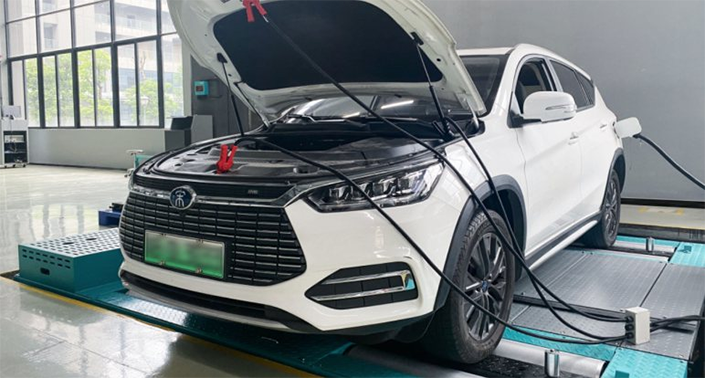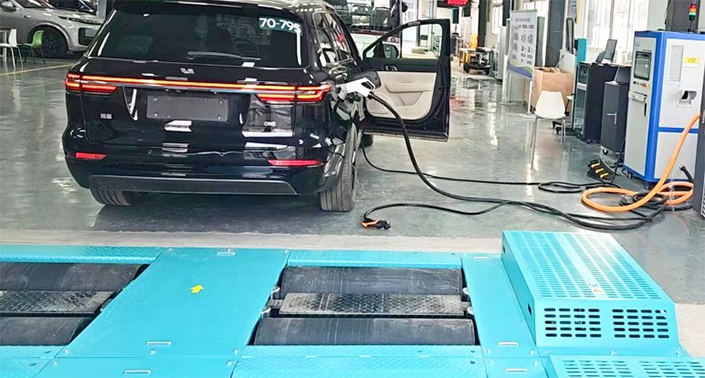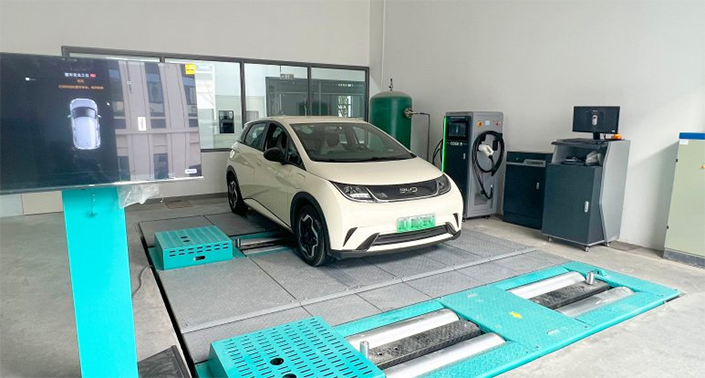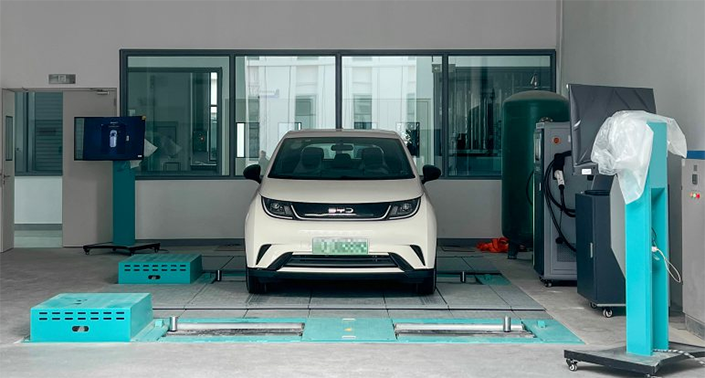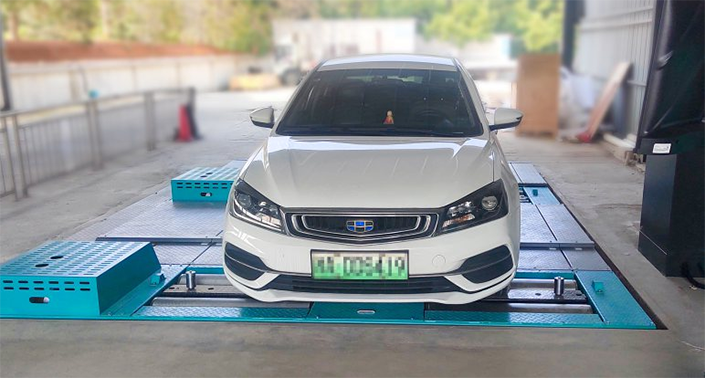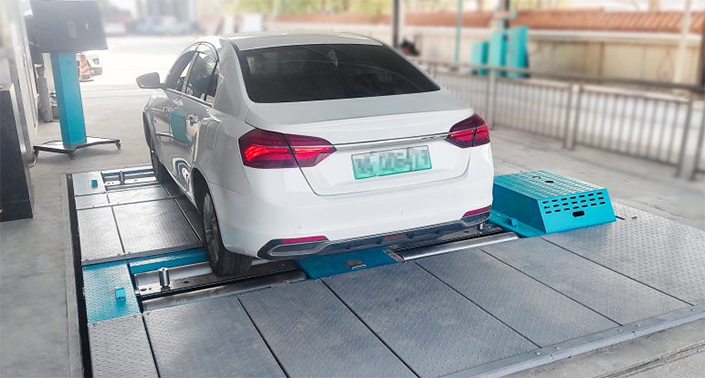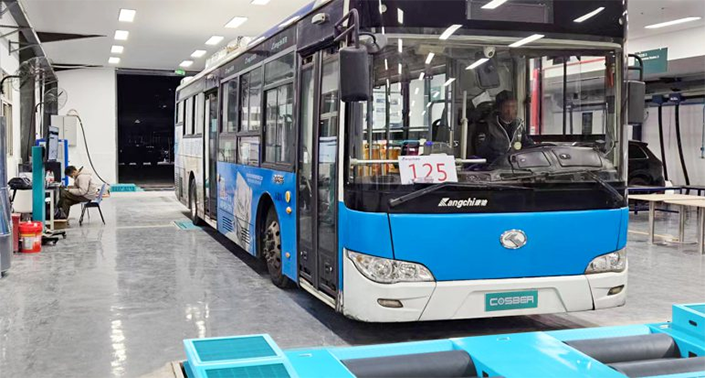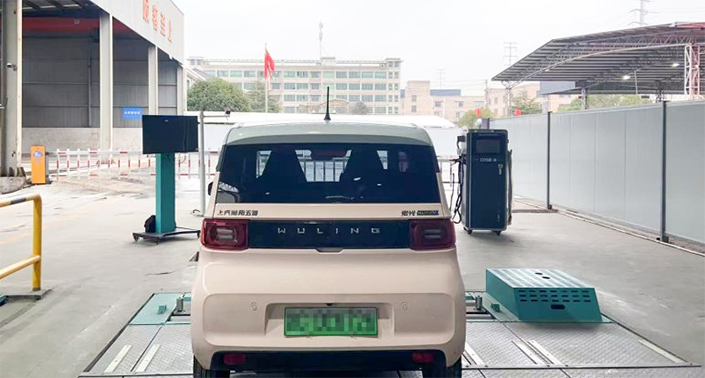Dyno Bench Technical Data
|
Item
|
4WD EV Dyno(Z-Shaft Linked)
|
Heavy-duty chassis Dyno
|
|
Maximum carrying vehicle mass
|
5000kg
|
-
|
|
Maximum bearing axle mass
|
3000kg
|
13000kg
|
|
Maximum absorption driving force
|
0〜6000N×2
|
0-10000 N
|
|
Max. test speed
|
130 km/h
|
130 km/h
|
|
Roller diamete
|
Ф216mm
|
Ф373mm
|
|
Roller length
|
1000mm
|
1050mm
|
|
Inside wheel thread
|
700mm
|
900mm
|
|
Outer wheel thread
|
2700mm
|
2900mm
|
|
Minimum vehicle wheelbase
|
2300mm
|
-
|
|
Maximum vehicle wheelbase
|
3300mm
|
-
|
|
Eddy current rated power
|
160 kw x 2
|
700 kW(max absorbtion power)
|
|
Back drag motor power
|
7.5kW
|
11 kw(transducer control)
|
Software UI

|
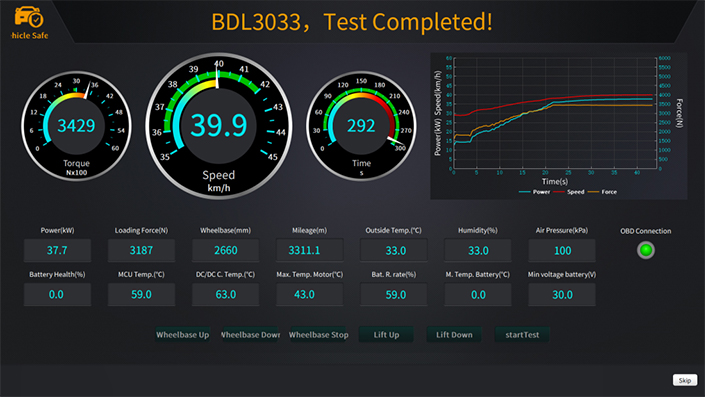
|
|
Dis-charging/Charging Test Software
|
Dis-charging Test Interface
|
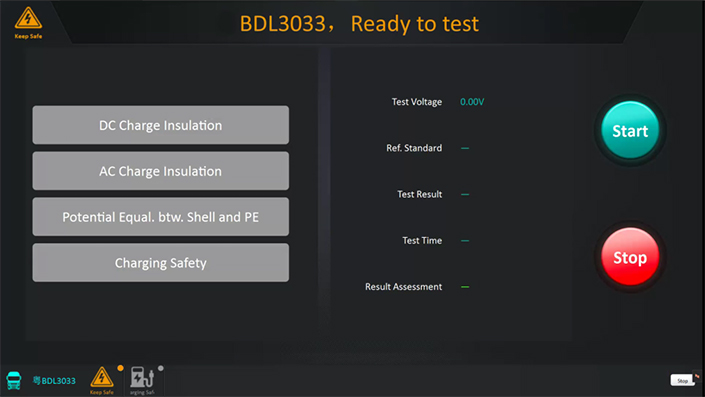
|
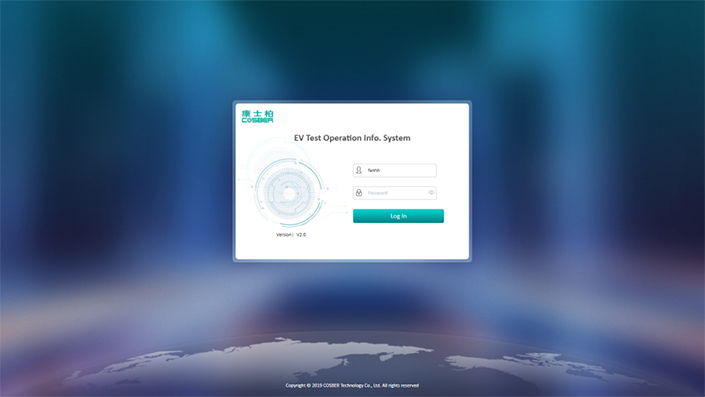
|
|
Charging Test Interface
|
EV Test Operation Info. System
|
Why 4WD Synchronized
Most of the 2WD EVs have high-accuracy wheel traction control. However, if the four wheels are not moving at the same speed, power take-off of the EV could be limited or suppressed.
|
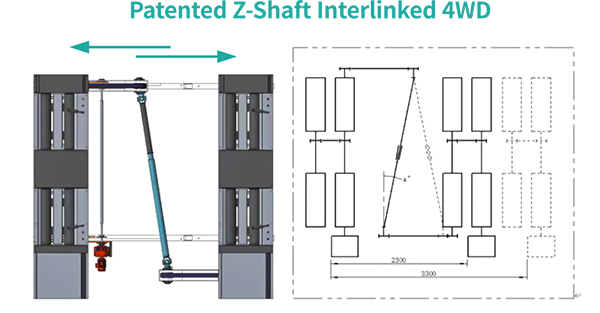
|
For All-Wheel Drive(AWD) EV, the front wheels and rear wheels are usually powered by two different motors with different power grades. As a result, the front wheels and the rear wheels will not have the same speed during a regular DYNO test.
|
|
To address this issue, we must use the interlinked 4WD Dynamometer for a perfect simulation of the synchronous operation of wheels during testing.
|
EV Dis-charging Test Functions

|
Discharging Simulation
|

|
BMS Monitoring and
Driving Capacity test
|

|
EV Output Power and
Electric Regenerative
Braking System Test (Optional)
|
|
4WD Cycle Running at 0-130km/h on
the Dyno chassis for the Battery
Discharge Simulation.
|
Real-time monitoring of EV's driving state during
the Dyno test (via EV-OBD or Dashboard). It is
also capable of testing the stability of an EV's
driving under specified conditions.
|
EV output power test is conducted
under a synchronous 4WD running
condition.
Comparison of drag power test for
ERBS of EV during its cruising cycle
(optional).
|
EV TEST CUSTOMER CASES










